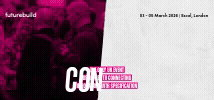As the push for improved workplace productivity continues, architects are on the hunt for acoustic solutions that can tackle noise overload. However, when it comes to fire safety, not all products are created equal. Ben Hancock, managing director at Oscar Acoustics, explains why quality counts and why a meticulous eye is needed around safety certifications.
Hybrid working has taken office culture by storm and over the past few years, it’s transformed what employees and employers expect from a workplace environment. Yet, these changes have now raised question marks around productivity. Opinions have changed, with many employers viewing increased time in the workplace as a way to boost bottom lines and enhance staff performance.
To achieve this goal, businesses now recognise the need to address excessive noise – their biggest productivity killer. Left unchecked, it’s leaving employees stressed and unable to focus. This painfully echoes research we undertook last year, which discovered eight in ten financial services workers experienced a productivity crash due to elevated noise levels in 2023.
It’s why many design briefs now feature requests for sound management solutions. Employers increasingly look to architects as acoustic trouble-shooters, placing aural comfort at the heart of the conversation.
Proof of performance
Yet sacrificing safety and performance for short-term gains rarely pays off, and in matters of fire safety, there can be no room for error. The booming demand for acoustic products has also flooded the market with options that over-promise but under-deliver. Established companies are left grappling with the fallout, bearing the brunt of costly reworks, unwittingly putting building occupants at risk.
Thankfully, the industry’s push for fire safety is moving at a rapid pace, and the need for relevant third-party certifications is now top of UK specifiers’ wish lists. Products that can prove their performance are now worth their weight in gold, allowing architects to sleep easy in the knowledge that when it comes to the crunch, products can be relied upon to play their part.
Recognising excellence
So, how is it possible to tell the good from the bad? Firstly, without proven fire safety reports, users are in the dark when it comes to real-life performance.
However, choosing the right product is about more than just safety certifications. Architects must ensure that they align with the correct colour and material depth of the specification. This requires nuance and understanding but can make a huge difference to the way a product performs under emergency conditions. It’s therefore crucial that certifications are understood in context, as they might not always be relevant to the job at hand.
A quality acoustic spray and installation – one that goes above and beyond Approved Document B fire requirements (Class 0 to BS476 & B-s1, d0 fire rating) will produce little to no smoke and absolutely no droplets. Should a fire break out, this technology has the potential to help save lives, helping occupants to escape buildings safely.
A quality acoustic spray will also offer self-extinguishing capabilities, reducing the likelihood of flames spreading to other parts of the building. A Class 1 fire rating – the highest rating in the British Standard Fire Resistance classification (BS 476), will stop flames from spreading further than 165mm from the point of ignition (when tested over a ten-minute period). On the opposite side of the scale, Class 4, offers the poorest fire protection, producing the longest distance and fastest spread of flames.
It’s important to note that, when searching for fire safety credentials, Class 0 is not reflective of fire tests but is a classification from Building Regulations 1991 – Fire Safety, Approved Document B. For a product system to achieve this rating it must deliver on two fronts. The first, achieve a Class 1 fire rating from BS476 Part 7, relating to the surface spread of flames. The second, pass the Part 6 test to prove it has a fire propagation index (I) of not more than 12 and a sub-index (i1) of not more than 6 – this is the amount of heat given off during the fire.
In short, Class 1 will protect surfaces from the spread of flames while Class 0 will also help limit the amount of heat produced. For businesses and building owners, not only does this help keep occupants safe but it also helps to protect the building from damage. In extreme cases this could even help maintain structural integrity, should a fire break out.
Know your product
This highlights the importance of ‘knowing your product’, as not all products are created equal. When it comes to specifications, architects must request evidence to support any product claims to ensure that they are what they say they are. Shockingly, only a handful of acoustic products can provide relevant fire-rated certification, for the specified material colour and depth. This is why premium acoustic sprays with third-party certifications are so in demand and are increasingly being used to tackle overbearing noise within commercial properties.
They aren’t just being used for safety purposes either, premium acoustic sprays can contribute towards many sustainable design and health certification systems too, including BREEAM, SKA and the Living Building Challenge. Choosing the right acoustic spray can add up to 17 points toward the LEED (Leadership in Energy and Environmental Design) rating of a project.
What’s clear is that when it comes to fire safety, leaving it to chance is no longer a viable option. Specifiers must be able to recognise when a fire safety certification is correct, and when it isn’t, based on the product in question and how it’s planned to be used within design plans. This also stresses the point of working alongside suppliers of acoustics solutions who have the skill and know-how to ensure architects make the right choice. So, let’s give fire safety in acoustic products the attention it deserves – our collective health and safety depend on it.


